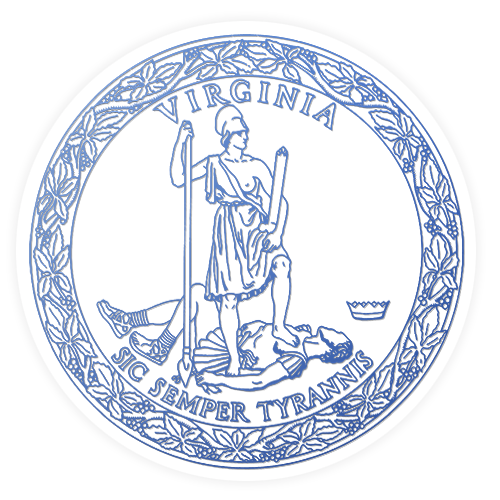
RICHMOND—Governor Ralph Northam today released the final restoration plan for Virginia’s portion of the Chesapeake Bay and its tidal rivers. The clean-up plan, referred to as the Phase III Watershed Implementation Plan (WIP), will guide local, state, and federal actions through 2025 and is designed to meet the Commonwealth’s commitments to reduce nutrient and sediment pollution and restore the health of the Bay and its tributaries.
Virginia’s Phase III WIP lays out over 50 targeted state initiatives to support the efforts necessary to achieve the Commonwealth’s restoration goals by 2025, placing a strong emphasis on sustained funding and increased technical capacity across all sectors. This strategy is intended to systematically close the outstanding gaps during the final phase of restoration and enable the Commonwealth to reach its pollution reduction targets.
“As we approach the final stage of a 15-year effort to clean up the Chesapeake Bay, this bold, comprehensive plan will ensure that we finish the job by 2025,” said Governor Northam. “Virginia’s targeted, science-based approach is a reflection of our commitment to making the necessary investments and working with our watershed partners to achieve our shared goals of a fully restored Bay. As our current progress has shown, cleaner waters are good for our economy and our quality of life, and these actions will help ensure that future generations can continue to benefit from our vast waterways.”
Since the first phase of the plan, Virginia has made measurable progress in reducing pollution, which has resulted in a healthier bay with cleaner waters, more fish and oysters, and underwater grasses that are rebounding. Continuing that progress necessitates accelerated and more deliberate action by government, wastewater utilities, the agriculture industry, landowners and homeowners, lawn care companies, the general public, and many more. The Phase III WIP serves as the blueprint to achieve Virginia’s restoration commitments by 2025.
“Throughout this process, we have achieved Governor Northam’s goals to engage with Chesapeake Bay program partners, stakeholders, local governments, and soil and water conservation districts to develop a plan that is resilient, practical, cost-effective, and provides multiple benefits,” said Virginia Secretary of Natural Resources Matthew J. Strickler. “The Phase III WIP will result in a healthier, more diverse economy—including recreation, tourism, and water-based industries—increased property values, more sustainable land use, and a Chesapeake Bay that every Virginian can enjoy.”
Virginia’s targeted approach includes a focus on providing farmers with improved financial and technical assistance by adding new tools and resources for Virginia’s Agriculture Best Management Practices Cost-Share Program (VACS) and the Agricultural Best Management Practice Loan Program. For fiscal year 2020, Governor Northam has invested more funding than ever before in the VACS program—$73 million, $11 million more than the previous record amount and a $50 million increase over the last fiscal year.
“This additional cost-share funding for voluntary agricultural best management practices and technical assistance will help farmers and forest landowners in continuing good land stewardship and will further assist Virginia in meeting the water protection goals outlined in the Phase III WIP,” said Virginia Secretary of Agriculture and Forestry Bettina Ring. “We recognize and appreciate the role landowners as well as the agriculture and forest industries have played in ensuring the restoration of the Chesapeake Bay, and we look forward to continuing to work collaboratively with them to reach the goals outlined in the plan.”
Virginia’s plan also calls for additional pollution reduction over time from wastewater facilities, maintaining tough regulatory requirements for large municipalities, and a first-ever collaboration with local planning district commissions to address polluted stormwater runoff.
Governor Northam released Virginia’s draft of the Chesapeake Bay clean-up plan on April 5, 2019 and invited the public to review and provide recommendations through June 7, 2019. Virginia’s extensive outreach efforts resulted in over 4,800 comments that guided revisions and adjustments for the final Phase III WIP.
“Over the past several decades, we have worked diligently with other agencies, organizations, and landowners to significantly improve the Chesapeake Bay, starting with the tributary strategies and then the Phase I and Phase II WIPs,” said David Paylor, Director of the Virginia Department of Environmental Quality. “With the completion of its Phase III WIP, Virginia is well-positioned to benefit from more than just cleaner water and improved living resources, but also a stronger economy.”
On December 29, 2010, the EPA established the Chesapeake Bay Total Maximum Daily Load (TMDL) to address pollution threatening the waterways in the Chesapeake Bay and restore the region’s watershed, streams, creeks, and rivers. The Chesapeake Bay watershed includes Maryland, Delaware, West Virginia, Pennsylvania, New York, and the District of Columbia. The Phase I, II, and III WIPs have been developed by each watershed jurisdiction to achieve the TMDL for nitrogen, phosphorus, and sediment.
Virginia’s final Chesapeake Bay restoration plan can be found here.
# # #